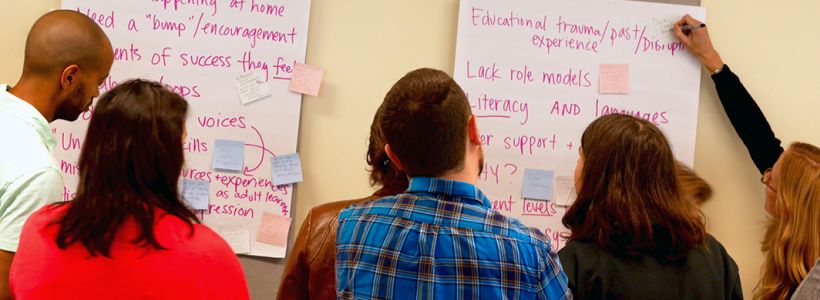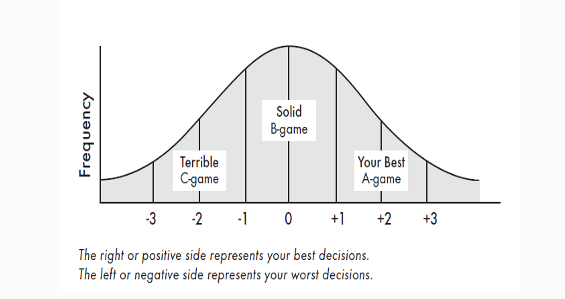
It’s no great secret that these days the games are as tough as they have ever been. The long and short of this is that it has never been more important to get the best out of your study time to improve your game. Following the standard 2005 advice of just bet your strong hands and play cautiously with everything else is well out of date.
Fortunately, in 2019 the poker community has a new approach. No longer do the good players haphazardly browse through articles and strategy videos, they know exactly how the learning process functions.
We have a lot to thank Jared Tendler for. When he released his classic books The Mental Game of Poker 1 & 2 we finally understood a lot about where we had been going wrong. Tendler explained the theory behind tilt, but what was just as important was that we could now see how to learn efficiently and effectively.
This learning process goes hand-in-hand with keeping a good mindset for your sessions. You can imagine this was all a culture shock coming back 2011. The poker world was still in shock following the events of Black Friday.
What We Learned
Everyone knows that young children learn at an incredibly fast pace compared to adults, but the method is actually totally different. Luckily, Jared Tendler had all the answers.
This process is known in the psychology trade as the adult learning model. There are four distinct stages in this process, and once they are all understood you will be able to take full control of your learning process.
- Unconscious Incompetence: Here we just don’t know what we are doing, or are even supposed to be doing. We are basically ignorant but know the rules of the game.
- Conscious Incompetence: At this point we are starting to know what we want to do, we just don’t have the ability or knowledge to perform yet.
- Conscious Competence: By now we are putting the right skills to good effect in all the right spots, but the trouble is that we are using so much mental effort that we still make mistakes and can’t perform hour after hour.
- Unconscious Competence: This final stage is the holy grail for learning anything. We can literally autopilot without making mistakes. The skill is now fully hardwired into our brain and as simple as walking.
Knowing all of this still does not complete the story. The idea is to really feel where in this stage we are. It is critical to be honest with ourselves and not fall prey to the Dunning–Kruger effect - worth Googling to understand why people fail at poker by the way.
The difficulty is knowing when we cross into stage four from stage three. What will happen if we move onto a new skill too early is that we end up with too many skills with incomplete learning piling up. Sooner or later we find our mental capacity is full to bursting and we either can’t play as many tables as we want to, or our results crash horribly.
The Inchworm Concept
Jared Tendler went even further to explain just what is happening when we are learning new skills. He introduced the inchworm concept to the poker community. This is known in academic disciplines, but hard-working poker players were enlightened by what this revealed.

We can see from the graph that it is impossible to play our absolute best every session, but this applies to everybody, so we shouldn’t worry apart from making sure we give ourselves the best chance to play our best at every opportunity.
Where this graph helps a poker player is that as we learn more skills our A-game moves to the right. Now you can see that this will flatten the bell curve and we will no longer be playing our B-game as much as before. Our performance will become much more random and influenced by external factors. To complete this process we must master the weakest parts of our game that we haven’t learned to stage four yet. This way the graph will change every time we work and move like the “inchworm” Tendler speaks of.
The flip side to all of this is that if we concentrate exclusively on our weaknesses rather than starting to learn new material then our graph will never move forward. It will peak extremely high in the middle and our performances day-after-day will be extremely consistent but ultimately we will never improve and move forward.
Why Else Do We Fail?
The final highlights of Jared Tendler’s books talk us through three other factors why we might fail at poker. Confidence, motivation and fear.
If we lose confidence then it destroys our thought process. We start to second guess ourselves. Running bad is a part of gambling and we must be in tune with the true nature of the game. If you then become scared to play because of bad results this will result in opportunity cost loss if we are a winning player, either now or can expect to be in the near future.
We must also maintain the proper motivation. Even without fear and confidence human beings are prone to laziness.

